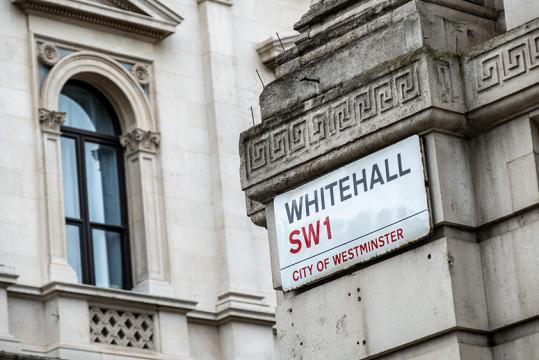The Pension Schemes Bill: the key takeaways for pension schemes

The Pension Schemes Bill is more than 100 pages. So, if you haven’t got the time or the willpower to read it all, we’ve summarised the main points for pension schemes.
First, we’d like to commend Torsten Bell, the pensions minister, for publishing a much more readable 20-page roadmap. In his foreword, Bell says: “A huge amount of change in our pension landscape is underway. Rightly so” and that the “task for the second half of the 2020s is to build not just savings pots but a pensions system”.
Based on the roadmap, here are our key takeaways on the government’s reforms, which are rooted in “scale” (consolidation and better governance of pension schemes) and “investment” (maximising the potential for pensions to underpin the UK economy).
The UK has the second largest pensions system in the world, but the government says it isn’t fulfilling its role of underpinning British capitalism. Pension funds are, it says, too fragmented to reduce costs, set a clear strategy or become active owners, leaving savers and the economy worse off.
The bill’s significant measures are:
For defined benefit (DB) schemes:
- Local Government Pension Scheme: reforms to investment management and governance, including minimum standards for asset pooling
- Superfunds: a permanent regulatory regime to make sure this market reaches its potential to create larger vehicles for consolidating DB schemes that can’t reach buy-out
- Surplus flexibilities: allowing well-funded DB pension schemes to safely release some of the £160 billion surplus funds to be reinvested across the UK economy and improve outcomes for members. The Pensions Regulator is expected to release guidance on trustee duties “very soon”
- Pension Protection Fund (PPF) levy: after the PPF more than halved its levy to £45 million for the current year, the government will make changes that give the PPF board comfort in setting an “appropriate” annual levy
For defined benefit (DC) schemes:
- DC minimum size and default arrangement consolidation: minimum size requirements for a main scale default arrangement of £25 billion with the goal of at-scale arrangements delivered by 2030
- Contractual override: making sure contract-based DC scheme providers can move or consolidate their schemes and members’ pots to reduce fragmentation and improve outcomes
- Mansion House Accord: seventeen DC scheme providers committing to invest at least 10% of their main default funds in private assets, with at least 5% earmarked for the UK, by 2030. (The government has also included a power in the bill allowing it to set mandatory investment targets for schemes if the industry doesn’t change in line with the Mansion House Accord)
- Value for Money: by encouraging a holistic view of value (assessing investment, costs and services), the framework aims to improve outcomes for pension savers by improving performance or removing poor performing pension schemes/arrangements from the market
- Guided retirement: new duties on trustees to provide default solutions for their members, from which they can choose to opt out. To provide guided retirement across the market, the FCA will make comparable rules for the managers of workplace schemes
- Collective DC (CDC): this autumn, regulations will be published to allow multiple unconnected employers to set up a CDC scheme. The rules will come into force in 2026. Also, work will be progressed on CDC schemes to be used only in retirement, allowing some members with DC pots to access CDC benefits in their retirement to give them a lifelong income
- Small pots: providers will be authorised to act as a consolidator schemes so that small workplace pension pots (up to £1,000) will be transferred automatically into a small number of large, good value schemes, subject to certain requirements
- Targeted support: in addition to pensions dashboards, to encourage pensions engagement, the government is working with the FCA on rules that will enable firms to offer a new type of service to bridge the gap between guidance and more bespoke financial advice. The government expects this service to be widely available
For those who remember Adair Turner’s A New Pension Settlement for the 21st Century, Bell concludes by saying:
“It is 20 years since the Turner Commission, and it is time to build on that legacy by completing the job. I am alive to the challenges of doing so, but we should take confidence from the policy challenges we have overcome before; the challenges of the 1990s, where the threat of employer insolvencies risked leaving employees with empty promises, and of the 2000s, where millions were saving nothing for their retirement at all.”
It’s also worth noting the roadmap’s promise that the second phase of reform will start “in the near future”. It will carry out “a comprehensive assessment of the adequacy of retirement incomes for future generations of pensioners”. This phase of the pensions market review was delayed at the end of 2024. We wrote about the importance of phase 2 here.
Separate from the review, the government will continue to consider the possible role for a government consolidator for DB schemes, run by the PPF, and changes to the framework of regulation and enforcement including, later this year, a consultation on measures to improve the governance of trust-based schemes.
The content provided in our publications, including articles on our website and podcasts, is intended solely for informational purposes. It should not be construed as professional advice and should not be relied upon for any purpose. We strongly recommend seeking appropriate professional advice tailored to your specific circumstances before making any decisions based on this information.



